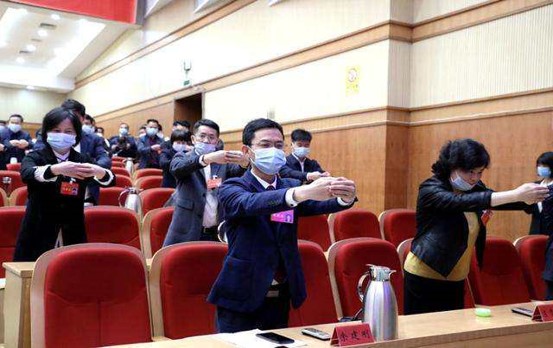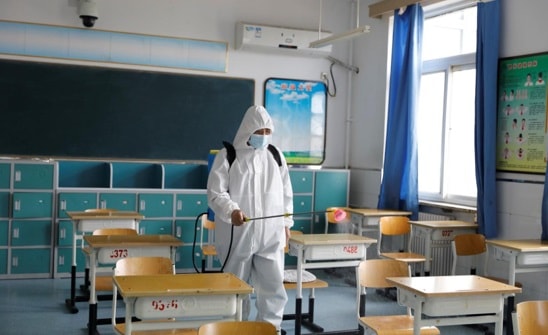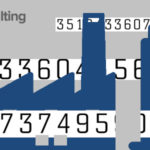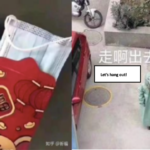50 measures China uses to suppress the spread of COVID-19
In May 2020 China’s leaders have declared the coronavirus outbreak largely under control within its borders and life is almost back to normal. Shops, restaurants, bars, and offices were open for business. Manufacturing activity is picking up. The initial wave of infections was largely contained by late March, largely thanks to sweeping lockdown measures. As outbreaks worsened in other countries, China closed its borders to most foreigners, imposed strict screening at airports and placed all returning Chinese citizens under quarantine. Despite the preventive measures, clusters of local infections still flare up around the country, and preventing the spread is still a concern. However, as the epicenter of the outbreak, and as a country which recovered relatively swiftly, we wonder exactly how China suppresses COVID-19.
World Health Organization described China’s response to COVID-19 outbreak as the “most ambitious, agile and aggressive disease containment effort in history”. China’s early isolation and the resulting drop in contact between people helped to reduce cases. The government is not the only body to take swift actions, businesses, schools and individuals also played important roles in preventing the spread of COVID-19. Hence, the learning points are widely applicable. That is why Daxue Consulting examined 50 measures of how China suppresses COVID-19.
NO AND LOW CONTACT
- SEPARATING STUDENTS IN DINING HALLS
In schools, students had plastic dividers during school meals to prevent cross infection. Some schools divided students lunch periods so fewer students eat at a time.
- ENFORCED SOCIAL DISTANCE IN SCHOOL
Some primary schools used a creative way to enforce social distancing between students. They had students wear ‘distance hats’ to maintain a distance of one meter from one another.
- MASKS IN PUBLIC TRANSPORTATION
During the epidemic, the National Health Commission required people to wear masks on public transportation. In addition, the National Health Commission suggested people disinfect their hands after using public transportation.
- MASKS ARE REQUIRED IN SHOPPING CENTERS
All the employees in shops must wear masks when they are on duty. Guards check consumers’ masks and health code at the door.
- MASKS ARE REQUIRED BY RESTAURANTS
People without masks cannot enter most restaurants during the epidemic. This measure helped Chinese people to form the habit of wearing masks every day.
- RESTAURANTS PROVIDE ENVELOPES TO PUT MASKS IN
To prevent masks from getting contaminated on restaurant tables, many restaurants provide envelopes for customers to set their masks down.
- LIMITED NUMBER OF PEOPLE ALLOWED ON ELEVATORS
It is easy to spread COVID-19 in elevators. Hence, many Chinese office buildings limited the number of people in elevators at one time. Also, plastic is used to cover elevator buttons and the plastic is changed every day. Some office buildings even provide toothpicks or tissue for people to press elevator buttons.
- BANKS OFFER DISPOSABLE TISSUES TO TOUCH DOOR HANDLES OF ATM
During the epidemic, many banks offered tissues outside each ATM’s door for clients to use when touching door handles.
- DIDI’S TAXIS PROTECT PASSENGERS BY INSTALLING PLASTIC FILM
From early February, Didi installed protective plastic film in the back of taxis to protect both drivers and passengers. Simultaneously, both passengers and drivers need to wear masks in the car.
- DELIVERY PEOPLE NOT ALLOWED IN RESIDENTIAL BUILDINGS
According to the policy of local governments, residential areas have a designated area for temporary package storage. Customers shall pick them up by themselves. Contactless delivery reduces the risk of contagion.
- ONE METER DISTANCE BETWEEN PEOPLE IS REQUIRED WHEN STANDING IN LINE
In correspondence with local government’s regulations during COVID-19, shoppers need to keep 1-2 meters distance from each other when standing in line. To nudge consumers into standing at least one meter apart, stores labeled standing spots.
- OFFICES ALLOW FLEXIBLE WORK SCHEDULES
Many Chinese companies allowed flexible work plans during COVID-19. When the situation was serious, only a few employees worked at their offices. Besides, during the epidemic, many companies required employees to work remotely in China. As the situation improved, more employees could work from offices.

Source: Daxue consulting and Dragonfly Group, Impact of the COVID-19 epidemic on the organization and HR within French and French-speaking companies established in China
- NO SHAKING HANDS IN BUSINESS SETTINGS
To abide by the recommendation to stay 1 to 2 meters from each other, the member of CPPCC National Committee, Yang Zhaoming, advocated that people should use the Chinese traditional greeting way to pat each other on the back or bow instead of shaking hands.

Source: Oriental Daily, How China suppresses COVID-19 report by daxue consulting. Members of the CPPCC National Committee greet each other.
- THE CENTRAL BANK ENCOURAGED NO CASH PAYMENT
Cash can spread the virus easily. Thus, the People’s Bank of China advised people to use more non-cash methods, especially mobile payments.
- IMPLEMENTING LOW-CONTACT MEASURES IN RESTAURAUNTS
Another way of how China suppresses COVID-19, was shortening the opening time of restaurants to reduce the crowded traffic. Some restaurants in China offer public chopsticks and spoons to use on shared dishes.
MASS DISINFECTION
- DISINFECTING PUBLIC TRANSPORTATION
In terms of public transport, the way of how China suppresses COVID-19 included disinfection of public transportation vehicles once a day after operation. Besides, in buses and subway, commonly touched hard surfaces also were disinfected.
- DISINFECTING COMMERCIAL STORES
In retail industry in China, the disinfection of commercial stores, focusing on the surface of tables, door handles, ground, and walls was obligatory.
- DISINFECTING COMMUNITIES BY COMMUNITY STAFF
Following the guideline released by Beijing Center for Diseases Prevention and Control (疫情防控中心), commonly touched objects such as stair railings and door handles should be disinfected by chlorine concentration of 250-500mg/L or 75% ethanol once a day.
- DISINFECTING IN SCHOOLS
The National Health Commission and the local Municipal Health Commission required teachers and staff to disinfect schools.

Source: Sina news, How China suppresses COVID-19 report by daxue consulting. Schools in Miyun thoroughly disinfected every classroom
- HAND SANITIZER AVAILABLE IN PUBLIC PLACES
People can disinfect their hands in some public places with free sanitizer.
- SANITIZING PHONES IS ADVOCATED
As people use mobile phones every day, it is easy for the virus to adhere to the surface. Medical experts suggested people to disinfect phones 2-3 times a day by disinfectant wipes.
- CARRYING DISINFECTING WIPES IS RECOMMENDED
Chinese medical experts suggested carrying some disinfecting wipes every day so that they could sanitize their hands at any time
EDUCATE, TEACH, AND ENCOURAGE
- PUBLIC ANNOUCEMENTS TO ADVOCATE SELF-PROTECTION
It is quite common in China to see the posters in streets to advocate mask wearing and hand washing. The purpose of the measure is to generate a strong awareness of self-protection.
- POSTERS WITH HAND WASHING INSTRUCTIONS
In many public places, there are posters released by the local Municipal Health Commission to show hand washing instructions to teach the scientific way of washing hands.
- PROPAGANDA ON HOW TO DISPOSE OF USED MASKS
People have the awareness of wearing masks which is an effective way of self-protection, as well as protecting others. However, how to deal with the waste masks is also a major issue. If used masks are not disinfected before being discarded, it could contaminate hands again.
- DISSEMINATE THE KNOWLEDGE OF COVID-19 BASICS AND PREVENTION
Local governments propagandized the prevention measures of coronavirus by street posters that include:
- Introduction of COVID-19
- How the coronavirus spreads and prevention
- COVID-19 symptoms
- What to do if you show symptoms
- DAILY TEMPERATURE CHECKS FOR PUBLIC TRANSPORTATION STAFF
In terms of public transportation, the way of how China suppresses COVID-19 was measuring of employees’ temperature. Besides, wearing masks and disposable gloves was obligatory. However, the duration of enforcing this measure differs city by city based on the severity of the local outbreak.
- SCHOOLS RELEASED ONLINE COURSES
During the epidemic, all Chinese schools were closed for 2+ months and students had to stay at home. In order to make sure that course progress would not be disrupted by COVID-19, the Department of Education released a policy which required schools and universities to launch online courses.
- OVERSEAS CHINESE DONATED MASKS TO CHINESE HOSPITALS
When the epidemic was arising in China, the amount of masks available was inadequate. International students donated money and masks to China.
- CHINESE EMBASSY ARRANGED AIR LINES TO BRING INTERNATIONAL STUDENTS HOME
Due to the coronavirus outbreak overseas, many flights were cancelled. This led to a large quantity of Chinese travelers stuck in foreign countries. Thus, the Chinese embassy arranged flights to bring them home.
- AUTOMATIC VISA EXTENSION FOR FOREIGNERS
The Chinese government took foreigners in China into account as well. As traveling became unsafe during the pandemic, the Chinese government automatically extended all visas for two months if they expired.
POPULATION CONTROL
- PEOPLE WHO REJECTED EPIDEMIC PREVENTION MEASURES WOULD BE PROSECUTED FOR LEGAL LIABILITIES
People who have been in an epidemic region/city or closely contacted people with suspected/diagnosed cases had to accept temperature tests and centralized or home-quarantine for 14 days. If someone refused to give their information or accept body temperature tests, it would count as a crime of endangering public safety.
- LOCAL GOVERNEMNET LAUNCHED HEALTH CODES
Citizens could generate the personal health code through mobile apps in China, WeChat public account and QR code. The health code served as an electronic voucher for individuals to enter or leave cities. There are 3 types of them:
- Red: Need to be quarantined for 14 days
- Yellow: Need to be quarantined for 8 days
- Green: No need quarantine and free to enter any public places.
- RESTAURANTS AND ONLINE FOOD DELIVERY PLATFORMS SHOW THE BODY TEMPERATURE OF STAFF
Restaurants and online food delivery platforms in China launched many measures to ensure the food safety.
Temperature tests for delivery people and restaurant employees twice a day, disinfection of delivery boxes, wearing masks at work and contactless delivery service were very important during the epidemic. These measures had a great contribution to how China suppresses COVID-19.
- MEASURES IN RESTAURANTS, BARS, NIGHTCLUBS REQUIRED BY LOCAL GOVERNMENT
The main measures of how China suppresses COVID-19 in public places were: limiting the number of tables and diners, reducing the placement of tables and chairs, and increasing the distance between tables. Testing the body temperature of every consumer was also obligatory.
- BODY TEMPERATURE CHECK AND PASSES ARE REQUIRED BY OFFICE BUILDINGS
Guards check body temperatures at the entrance of office buildings in China. Delivered goods are in designated places at the entrance under the unified management and control. The air conditioning system in office buildings was turned off during the epidemic. All employees working in office buildings need to apply for passes, people from outside need to register personal information at the entrance.
- LIMITATING THE NUMBER OF TOURISTS
Online booking tickets helped to control the number of tourists in China in certain time period. The number of tourists in every scenic spot could not exceed 30% of its largest capacity. Tour groups cannot have more than 30 people. Indoor tourist sites were all closed.
- BAIDU LAUNCHED CORONAVIRUS INFECTION MAPS
Chinese search engine, Baidu launched the “fight against pneumonia” map to let users know the latest and accurate information in real time. People can have a better understanding of the of the epidemic situation in each city by using the map
- MEASURES TO MANAGE ACCESS/EXIT OF COMMUNITIES
When people come from other provinces or countries, they have to register travel info in their communities. Before entering a community, guards measure the temperature of every individual according the regulation of local governments. Some communities required residents to apply for pass codes on WeChat mini program.
- CHECKING BODY TEMPERATURE BEFORE ENTERING STORES
According to local government’s policy, testing body temperature before entering stores is important to protect customers and employees’ safety.
- MEASURING PASSENGERS’ TEMPERATURE BY THERMAL CAMERAS IN TRANSPORTATION STATIONS
Transportation stations, including subways, railways, and airports, have infrared thermometers. The system automatically detects the temperature of passengers when they pass security checkpoints.
- MINI PROGRAM TO TRACK PEOPLE’S TRAVEL HISTORY
The China Academy of Information and Communications Technology (CAICT) launched a mini program to track everyone’s travel history in past 14 days to see if they have been places seriously affected by COVID-19.
- REGISTERING ON A “HEALTH CLOUD SYSTEM” BY QR CODE TO ENTER SHANGHAI
Passengers who entered Shanghai shall apply for on-line health registration on the “health cloud” system.
- QR CODES TRACK PEOPLE’S POTENTIAL CONTACT WITH THE CORONAVIRUS
After scanning the QR code, passengers would know if they had close contact with suspected cases. They get the information by text messages to self-quarantine at home if they had.
QUARANTINE MEASURES
- ARRANGING CENTRALIZED QUARANTINE IN HOTELS FOR PEOPLE FROM FOREIGN AND DOMESTIC EPIDEMIC REGIONS
According to the Chinese government’s policy, people coming from domestic epidemic areas and all overseas areas should stay under the quarantine in hotels for 14 days. Doctors record their body temperature twice a day during quarantine. On the thirteenth day, they need to take a virus test. If their test results are negative, they can return home.
- IMPLEMENTING HOME-QUARANTINE FOR PEOPLE FROM HIGH-RISK REGIONS
People from overseas and domestic high-risk regions should stay under the quarantine for 14 days at home.
Groups which meet the requirement of self-quarantine at home:
- Over 70 years old
- Children
- Pregnant women
- Living alone
Doctors and police measure their body temperature twice a day. Also, there are door trackers on their doors. If doors open over 1 cm during the home-quarantine period, the police will be notified.

Source: Laiyuan, How China suppresses COVID-19 report by daxue consulting.
- LOCAL GOVERNMENT GIVES OUT GUIDELINES IN DIFFERENT LANGUAGES
China’s local governments gave out guidelines in different languages, so every foreigner in China understood what rules they should follow. Besides, the National Immigration Administration of the PRC gave out Chinese-English bilingual handouts of Laws observed by foreigners in China.
- DISINFECTING THE TRASH OF QUARANTINED PEOPLE
Every community set up a temporary garbage collection point to place garbage generated by quarantined people. The local Landscaping & City Appearance Administrative Bureau sent staff to disinfect the garbage before delivering it to incineration plants.
- MASS TESTING
In June 2020 China has completed a mass testing programme in Wuhan. Authorities in Wuhan have found more than 200 asymptomatic cases of the new coronavirus. Testing helps to find asymptomatic cases and people with an early stage of decease and put them under the quarantine.
- FINES FOR PEOPLE WHO DO NOT COVER THEIR NOSE AND MOUTH
Even though people must wear masks, many do it in a wrong way. Since April 2020 anyone who doesn’t cover their nose and mouth when coughing or sneezing will be fined.
KEY TAKEAWAYS
Digital technology was integral to containing COVID-19
Chinese government effectively identified cases and controlled the population by using Location Based Services (LBS) and big data technology. Also, big data platforms release real-time data about COVID-19, which is helpful to ease the public panic. At last, those technologies will continuously contribute to China’s public administration in the future.
The government & businesses educated the public on hygiene and social distancing tactics
Chinese local governments widely used signs to guide people to follow regulations during the epidemic. This nudged people on public transportation and in shops to keep a distance of 1-2 meters from one another.
Acting early was the key to contain COVID-19
Once COVID-19 was recognized as contagious, China took immediate measures to reduce population flow, such as the lockdown of Wuhan in January. Many cities and provinces took emergency control measures before discovering any COVID-19 cases. Those measures limited the spread of COVID-19 and gained time for follow-up actions. In addition, China’s capable of rapid response is important to managing public crisis.
Many COVID-19 prevention measures were decided on the city or province level
Chinese local governments took steps according to the different situation of provinces and cities. Also, the duration and enforcement are not uniform in different regions and communities. The advantage is that local governments can respond to the epidemic quickly according to the specific circumstances of each region. The downside is that China lacks a unified plan and supervision, which lead to the inefficiency of some measures.
See our report on how China suppresses COVID-19
Listen to 100 China entrepreneur stories on China Paradigms, the China business podcast
Listen to China Paradigm on Apple Podcast















